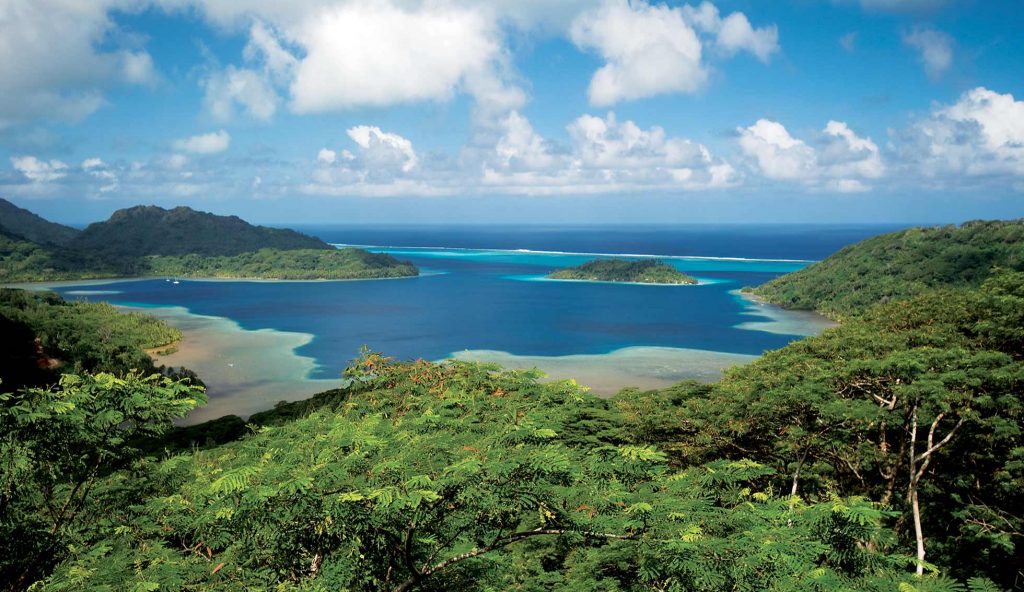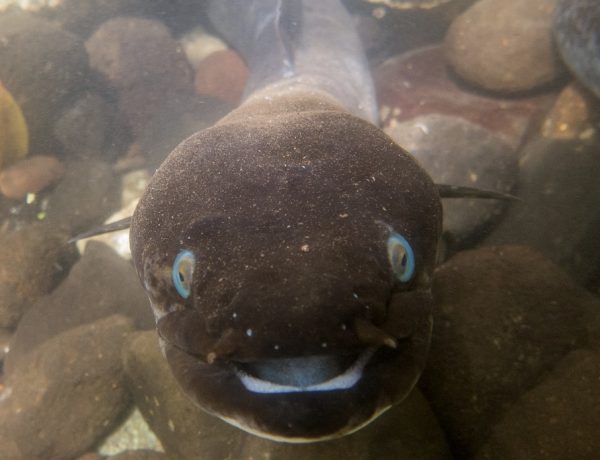
Huahine
The first European to set foot on the Island was Captain James Cook, who arrived on 16 July 1769, with Tupaia navigating HMS Endeavour. Tupaia was a Polynesian navigator and arioi (a kind of priest), originally from Raiatea. Known for his remarkable navigation skills, he sailed with Cook to New Zealand and Australia.

Huahine
- Surface area : 75 sq. Kilometres (28.5 sq. miles)
- Circumference : 60 km (37.5 miles) as a whole (Huahine Nui and Huahine Iti)
- Highest peak : Mount Turi (669 m = 2,194 ft)
- Districts: Huahine Nui Fare (port and main village), Maeva, Faie, Maroe and Fitii.
- Huahine Iti : Haapu, Tefarerii and Parea.
- Population : 6,075 (2017 census)
The large bay of Haameae is easily accessible by sailboat. The pass is well signalled and there is plenty of room to anchor off the large sandy beach. It’s a really nice spot to snorkel or sit painting and drawing on the beach.
It’s a beautiful island with white sandy beaches, thick rainforest, plantations of vanilla, coffee and taro, and the trees are dripping with avocados, breadfruit, mango, banana, papaya. It’s easy to see how it got its nickname as ‘the garden of Eden’. Beautiful flowers line the streets and ancient marae look out at the ocean passes of the stunning lagoon.

Huahine means ‘pregnant woman’ in Tahitian. It’s said to be named this way as the hills from the town of Fare look like a pregnant lady lying down. Huahine is actually two islands Huahine Nui (big island) in the north and Huahine Iti (small island) in the south, connected by a bridge above the lagoon and sand at low tide. There are several large and sheltered bays which make great anchorages.

The town of Fare is in walking distance from Haameae Bay and has a good supermarket, internet cafe, small hotels and all that you need for an enjoyable stay. You can rent cars, bikes and scooters from here. We would highly recommend renting a scooter and heading out to explore the Island. Huahine is not very big, just 16 km (10 mls) in length, with a maximum width of 13 km (8 mls) but the roads are long, winding around large bays. There are beautiful views all around the island. Some of the roads are quite steep, but it’s perfectly easy to cycle too, you just might need to get off and push sometimes! It’s well worth taking your time, possibly splitting your stay with two accommodations, one on the north of Huahini Nui and another on the south of Huahine Iti..



We especially love the beach at the site of the former hotel Hana Iti, sadly the hotel was destroyed in a cyclone in 1998. Apparently it was a beautiful five star hotel with treehouses all designed and decorated in different local styles. What remains today are just the ruins, but it makes you feel as if you have arrived at a lost treasure island. The view from the highest point, after climbing some wooden stairs that are falling apart, is spectacular.

We especially love the beach at the site of the former hotel Hana Iti, sadly the hotel was destroyed in a cyclone in 1998. Apparently it was a beautiful five star hotel with treehouses all designed and decorated in different local styles. What remains today are just the ruins, but it makes you feel as if you have arrived at a lost treasure island. The view from the highest point, after climbing some wooden stairs that are falling apart, is spectacular.
The site is looked after by Siki, who has set up a little hut and makes his shell jewellery to sell to passing tourists. He is very kind and encouraged us to go into the forest to look for papaya, passionfruit and coconuts. It’s a magical spot only accessible by boat or kayak.
You can’t visit Huahine without stopping to feed the sacred eels with bright blue eyes in the village of Faie. We had been told about them in the Marquesas, so we had to go see them for ourselves. You can buy tins of mackerel from the local shop to feed them and they go crazy for it….they are HUGE, apparently they can grow to six metres. You can get in the water with the local kids and play with them, if you fancy it!!!


The Marae Anini is on the southern tip of Huahine-Iti. As you walk along the beach you come across this ancient marae. It is thought that this marae was a temple built to honour Oro, the Polynesian god of war, and that human sacrifices were performed here. Hiro, the god of thieves was also worshiped on this marae.
The last priest of the marae, Hiro, told the Reverend William Ellis, in 1818, that he remembered at least 14 human sacrifices!

Marae Manunu is on a motu but joined to the mainland by a bridge. It’s opposite the village of Maeva on Huahine Nui. The massive structure is 2m high, 40m long and nearly 7m wide and is an impressive site to see. The Polynesian God Tane, the god of war and fish was worshiped here. The marae was associated with the construction of canoes, making adzes (a tool similar to an axe) and the braiding of ropes. The god Oro, was also worshiped here at a later date.
It is said that when the last high priest of Maeva died in 1915, a stone block of the marae collapsed and in accordance with Priest Raiti’s last wishes, he was buried on the site of the marae.
If you look carefully you can find a petroglyph of a turtle. The turtle was seen as a reflection of the god in the sea.
We have swam with manta rays just off the back of the boat at the sand bank of Avea Bay (Baie d’Auea) and we have sailed with humpback whales off the fringe reef of Huahine several times, as they pass through French Polynesia during the migration season in mid-August to the end of October. It’s a magical spot and has definitely been a highlight of our time living in Polynesia.

We have swam with manta rays just off the back of the boat at the sand bank of Avea Bay (Baie d’Auea) and we have sailed with humpback whales off the fringe reef of Huahine several times, as they pass through French Polynesia during the migration season in mid-August to the end of October. It’s a magical spot and has definitely been a highlight of our time living in Polynesia.
Surfing
Surfing in french Polynesia is just amazing! Like other water activities, it really feels like its deeply rooted in the Polynesian culture. Most Polynesians are so friendly and welcoming. Unfortunately, there is in few spots a bit of “localism” and strangers are not always welcome. Guillaume’s advice… stay cool, go see the local surfers in the water, tap hands and introduce yourself. Like in any other spots, respect priorities. There are loads of different surf spots in french Polynesia for all levels of surfing.
Having a boat makes it a lot easier to access the spots on the outer reef. The reef is not always forgiving. Guillaume came back often with deep scratches from being washed on the coral. The local method here to stop infection is treatment with lemon juice directly on the wound. It works but damned its painful!!




- Those who love to surf seek the world-class waves at Avamoa Pass and Fare. Don’t expect a warm welcome from local surfers.
- Melaine Dupre’s ‘Gallery Umatatea’ is located on the Motu of Maeva, about 800 metres after the bridge, across from the Pension Delord/Camping Vana’a. We love the way Melaine captures polynesia in her paintings. Her portraits of Polynesians are really stunning.
- The Camping at Hiva Plage in Parea, in the south of Huahini iti is in a super location, just on the beach. A perfect place for snorkelling and a good base to explore this area.
- Hotel Le Mahana in Parea, has a great restaurant if you fancy treating yourself to a nice meal out.
- Motu House- Motu Tefareri. Friends of ours stayed here. They are very friendly and they will even take you out surfing with them. Top!
- Huahine Yacht Club in Fare – It’s a really nice little bar and snack with a great view on the beach and lagoon.
